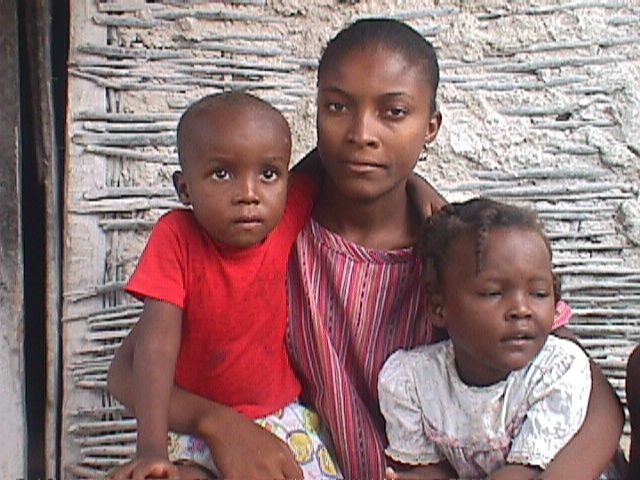Beverly Bell, author of the acclaimed book, Walking on Fire (2001), and one of the most vigilant contributors to the gender struggle in Haiti, illustrates how many feminist activist-scholars have tended to obfuscate gender issues in Haiti when she writes,
“Haitian women place at the absolute bottom in female-male life expectancy differential, incidence of teen marriage, contraceptive use, primary school enrollment, secondary school enrollment, and ratio of secondary school teachers.”
Bell is wrong on every count. At 63 vs 59 years, women in Haiti live longer than men (UN 2010); hovering at about 43 per 1,000 births per annum for adolescent girls 15 to 19 years of age, the teen pregnancy rate is among the lowest in the developing world, half or less that of many Latin American countries, including the neighboring Dominican Republic (World Bank 2013;WHO 2007; UNFPA 2007; WHO 2001). At 52% to 48%, Haitian girls have higher primary school attendance rates than their male counterparts (UNICEF 2008), at 21% to 18%, they have higher secondary school attendance rates (ibid), and at 87% to 76% they have higher overall youth literacy rates (ibid). As for contraceptive use, it is true that more Haitian women, particularly rural women, eschew contraceptives. But generally not, as feminists often claim, because of male domination. It is in fact women, particularly middle aged women, who are most in favor of high birth rates (see Schwartz 2009).
The point is that although Haiti is indeed poor and much of the population experiences extreme hardship, women have substantially greater status vis a vis their male counterparts than commonly acknowledged. Haitian women are considered the heads of homesteads. They are the “poto mitan,” the center post and support of the family. And their place in both the family and the economy is backed with economic power. Women almost completely dominate the itinerate trade on which Haiti’s domestic economy depends; they domiate the markets and the redistribution channels; and they control their husband’s agricultural activity to the point that it is women, not men, who harvest gardens and market the produce. For those who have studied the issue, we have documented the greater levels of violence and agression among women, both with respect to one another and men (myself in 2009 book Sex Family and Ferility in Haiti and Gerald Murray’s 1977 disertation).
Lest my motives be misunderstood, I am not trying to detract from Bell’s feminist-activist work. Her struggle to empower impoverished women and to expose their sufferings is unrivaled. Nor am I denying the importance of empowering women in Haiti: In urban areas violence against women is a problem. I believe this is a consequence of, a) the relative absence of family—parents, brothers, sisters, uncles, and cousins—who can protect or even seek revenge for the woman, and b) women in urban areas have far fewer economic opportunities than their male counterparts. In the rural areas we find the exact opposite conditions.
My point is that, as with so many issues pertaining to life in rural Haiti, researchers and aid workers devoted to a particular agenda selectively and erroneously grasp information. The types of misinterpretations that result have left a generation of scholars, aid workers, and interested laypeople with a mistaken image of gender among the 65 percent of the population that live in provincial Haiti.
For more expanded versions of this post see, ‘More on Gender in Haiti‘ and ‘Explaining Gender in Haiti: Review of the Literature.’
Works Cited
Bell Beverly 2001 WALKING ON FIRE Haitian Women’s Stories of Survival and Resistance. Cornell Press
CIA 2010 World Fact Book https://www.cia.gov/library/publications/the-world-factbook/fields/2102.html
Schwartz, Timothy 2000 “Children are the Wealth of the Poor:” High Fertility and the Organization of Labor in the Rural Economy of Jean Rabel, Haiti (PhD dissertation). Gainesville, Florida: University of Florida.
UNICEF 2008 UNICEF – At a glance: Haiti – Statistics www.unicef.org/infobycountry/haiti_statistics.html
UNFPA, State of World Population 2003, Retrieved Jan 22, 2007.
UNICEF (July 2001) (PDF). A league table of teenage births in rich nations. Innocenti Report Card No.3.
UNICEF Innocenti Research Centre, Florence. http://www.unicef-irc.org/publications/pdf/repcard3e.pdf.
Indicator: Births per 1000 women (15–19 ys) – 2002 UNFPA, State of World Population 2003, Retrieved Jan 22, 2007
WHO 2008 Haiti Country Profile Department of Making Pregnancy Safer
WHO 2001 Dominican Republic http://www.paho.org/english/sha/prfldor.htm
World Bank 2013 Adolescent Fertility Rate (Births per 1,000 Women Aged 15-19) http://data.worldbank.org/indicator/SP.ADO.TFRT








